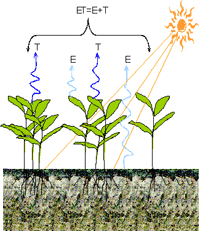Agricultural Research Division of IANR

West Central Research and Extension Center, North Platte
Date of this Version
2004
Abstract
Natural product herbicides for vegetation control are being considered as alternatives to synthetic herbicides by many public agencies. Studies were conducted along roadsides at the Hopland Research and Extension Center (HREC) in 2001 and 2002 and on California State Route 29 (SR29) in 2002 to evaluate acetic acid, pine oil, and plant essentials compared with glyphosate for control of herbaceous vegetation. In 2001, annual grass control after a single application of pine oil at HREC was 40% or less effective, whereas acetic acid was at least 79% effective. A second application of pine oil or acetic acid did not control regrowth or new plants. In 2002, plant essentials was the most effective (.80%) natural product at HREC for control of annual grasses, except slender oat. Pine oil often provided similar control of slender oat as plant essentials (71 and 69%, respectively). At SR29, five applications of acetic acid provided 83% or better control of slender oat, hare barley, medusahead, and broadleaf filaree. Plant essentials and pine oil controlled hairy vetch, broadleaf filaree, and hare barley at least 83%, but yellow starthistle, soft chess, buckhorn plantain, and medusahead control never exceeded 85%. Glyphosate controlled all vegetation in these experiments with one or two applications. The cost of one or more applications of the natural products was greater than 10 times the cost of using one or two applications of glyphosate. Natural products were neither efficaciously nor economically comparable with glyphosate for control of annual roadside vegetation.


Comments
Published in Weed Technology. 2004. Volume 18:580–587. Copyright 2004 Weed Science Society. Used by permission.